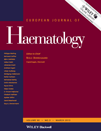A randomized double-blind, placebo-controlled study of therapeutic effects of silymarin in β-thalassemia major patients receiving desferrioxamine
Abstract
Objective
Thalassemia is one of the most common genetic disorders worldwide. Chronic blood transfusions treat the underlying anemia but may lead to iron toxicity. Effective iron chelation remains one of the main targets of clinical management of thalassemia major. In this study, iron-chelating activity of silymarin, a flavonolignan isolated from silybum marianum, was examined in β-thalassemia major.
Methods
Patients were treated with the combination of desferrioxamine and silymarin (Legalon®; n = 49) or desferrioxamine plus placebo (n = 48) for 9 months. The serum levels of ferritin, iron, total iron-binding capacity (TIBC), soluble transferrin receptor, and hepcidin were determined at the baseline and after 9-month therapy. Liver function test was performed before and after treatment in both groups.
Results
Serum ferritin levels decreased significantly from the beginning to the end of silymarin treatment (3028.8 ± 2002.6 vs. 1972.2 ± 1250.6 ng/mL); however, no significant change in serum ferritin was observed in the patients receiving placebo (2249.0 ± 1304.2 vs. 2015.6 ± 1146.8). Moreover, serum iron and TIBC levels were significantly reduced in silymarin group compared with placebo. Patients on silymarin therapy also exhibited a significant decrease in serum levels of hepcidin and soluble transferrin receptor after 9-month treatment period. A significant improvement in liver function test was observed in silymarin group in comparison with placebo.
Conclusion
This study shows that silymarin is effective at reducing iron overload in patients when used in conjunction with desferrioxamine. Therapeutic effects of silymarin on a background of desferrioxamine suggest the potential effectiveness of silymarin alone in reducing body iron burden.




